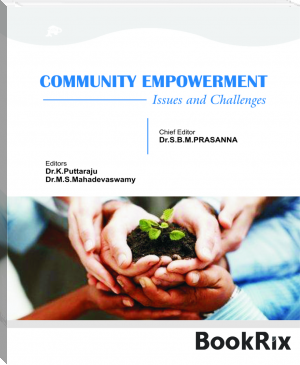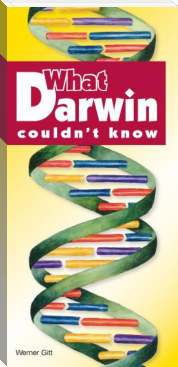Community Empowerment by Dr. SBM Prasanna, Dr. K Puttaraju, Dr.MS Mahadevaswamy (books under 200 pages TXT) 📕

Book online «Community Empowerment by Dr. SBM Prasanna, Dr. K Puttaraju, Dr.MS Mahadevaswamy (books under 200 pages TXT) 📕». Author Dr. SBM Prasanna, Dr. K Puttaraju, Dr.MS Mahadevaswamy
Achievement during 2014- 15
Rank
Cumulative progress since inception (as on 31-12-2014
Rank
SHGs six months old
Bagalkot
7551
254
10
7805
12
7079
Bangalore
7875
232
12
8107
11
7115
Belgaum
14146
1575
1
15721
4
12987
Bellary
6677
228
13
6905
17
6734
Bidar
21092
960
2
22052
2
21499
Bijapur
5803
361
6
6164
18
6093
Chikmanglore
12938
56
21
12994
6
12653
Chitradurga
6841
133
17
6974
16
6835
Davangere
5755
112
20
5867
19
4806
Gulbarga
7007
170
15
7177
15
5939
Hassan
13925
132
18
14057
5
13233
Kcc-Dharwad
8866
299
9
9165
10
7000
Kolar
2101
130
19
2231
21
1885
Kodagu
4555
135
16
4690
20
4596
Mandya
16365
952
3
17317
3
16140
Mysore
11390
245
11
11635
8
9809
N.Kanara
6859
346
7
7205
14
6651
Raichur
6544
673
5
7217
13
5199
Shimoga
9194
312
8
9506
9
9426
S.Canara
30064
877
4
30941
1
30476
Tumkur
11478
212
14
11690
7
11404
Total
217026
8394
225420
207559
Sources: Department of Micro Finance, Karnataka State Co operative Apex Bank Ltd., Chamarajpet, Bangalore 18
Interpretation:
The above table depicts the progress of SHGs formation. From the above table it can observe the progress of SHGs in various districts of Karnataka as on 31-3-2014 and achievement (new) of SHGs during 2014-15 and cumulative progress of SHGs from inceptions on 31-3-2014 and it can also observe in the table that six months old SHGs. from the above table it is found that S. Canara having highest number of SHGs as compared to other districts of Karnataka state with an number of 30,941 SHGs. Bidar stood at second highest number of SHGs with an number of 22,052SHGs and Mandya stood at third highest with a number of 17,317 SHGs. from the above table it also found the progress of formation of SHGs during 2014- 15, during the present year in term of formation of SHGs Belgaum stood at first place with the formation of 1575 SHGs . Bidar stood at second position with the formation of 960 SHGs in present year. Mandya stood at third position with number of 952 SHGs. Chikmanglore stood last place with least performance in terms of formation of SHGs with a number of 52 only.
Table No.2 : Table showing the Women SHGs in various districts in the state of Karnataka as on end December 2014
Sl. No.
Name of The DCCB
Women SHGs
Rank
1
Bagalkot
6779
16
2
Bangalore
8043
10
3
Belgaum
13044
4
4
Bellary
6822
15
5
Bidar
22052
1
6
Bijapur
5578
17
7
Chikmanglore
12038
6
8
Chitradurga
6974
14
9
Davangere
5558
18
10
Gulbarga
7065
13
11
Hassan
12299
5
12
Kcc-Dharwad
8027
11
13
Kolar
2231
21
14
Kodagu
3712
20
15
Mandya
16503
3
16
Mysore
10506
7
17
N.Kanara
5513
19
18
Raichur
7162
12
19
Shimoga
8171
9
20
S.Canara
20966
2
21
Tumkur
10122
8
Total
199165
Sources: Department of Micro Finance, Karnataka State Co operative Apex Bank Ltd., Chamarajpet, Bangalore 18
Interpretation:
The above table depicts the Women SHGs in various districts in the state of Karnataka. It is observed that Bidar district stood at first place in terms of having more number of women SHGs i.e. 22,052 SHGs in the state of Karnataka. S.Canara stood at second place with women SHGs of 20,966SHGs. Then Mandya stood at third place with 16,503 SHGs. N. Kanara stood at 19th place with a number of 5513SHGs. Kodagu and Kolar stood at 20th and 21st place with 3712 SHGs and 2231 SHGs respectively. From the above table it can understand that there is good progress of SHGS in different districts of Karnataka for the women empowerment.
Graph No.1 : Graph showing Number of SHGs and also women SHGs out of total SHGs in the state of Karnataka as on end December 2014
Inference:
The above graph depicts the total number of SHGs and also women SHGs in various districts of Karnataka State. From the above table it can be observed that S.Canara having more number of SHGs even percentage of Women SHGs is also more in S. Canara. Then Bidar stood at second place and Mandya stood at third place. From the above graph it is found that very less number of SHGs and Women SHGs are found in Kolar district.
Table No.3 : Table showing the SHGs Savings with Bank in the state of Karnataka on end December 2014
Sl. No.
Name of The DCCB
SHGs Savings with Bank/PACS (Rs. In Crores)
Rank
Bagalkot
3.33
15
Bangalore
3.04
16
Belgaum
14.41
6
Bellary
4.47
14
Bidar
18.22
3
Bijapur
13.50
9
Chikmanglore
14.28
8
Chitradurga
0.05
21
Davangere
0.10
20
Gulbarga
2.86
18
Hassan
19.71
2
Kcc-Dharwad
6.33
12
Kolar
2.80
19
Kodagu
5.69
13
Mandya
17.31
4
Mysore
15.65
5
N.Kanara
14.65
7
Raichur
2.90
17
Shimoga
8.59
11
S.Canara
63.65
1
Tumkur
10.56
10
Total
242.10
Sources: Department of Micro Finance, Karnataka State Co operative Apex Bank Ltd., Chamarajpet, Bangalore 18
Interpretation:
The above table depicts the SHGs Savings with Bank in the state of Karnataka. From the table it can be observed that S. Canara stood at first place in terms of SHGs savings with Bank with an amount of Rs. 63.65Crores, and then Hassan stood at second place with an amount of Rs. 19.71 Crores. Bidar stood at third place even though it is a backward district in the state of Karnataka with an amount of Rs.18.22 Crores. Kolar stood at 19th Place with an amount of Rs. 2.80Crores. Davangere and Chitradurga stood at 20th and 21st place with an amount of Rs. 0.10 Crores and Rs. 0.05 Crores respectively.
Conclusion:
From the above study it is found that progress of women SHGs in Karnataka year by year is commendable. From the study it is also found that SHGs have been identified as a way to alleviate poverty and women empowerment. And women empowerment aims at realizing their identities, power and potentiality in all spheres of lives. It should be noted that the real empowerment of women is possible only when a woman has increased access to economic resources, more confidence and self motivation, more strength, more recognition and say in the family matters and more involvement through participation. Although it is a gradual and consistent process, but women should build their mindset for taking additional effort willingly for their overall development. SHGs have the potential to have an impact on women empowerment. at last it can be conclude that India is the country where a mutual model between banks, NGOs, MFIs and Women’s organizations is furthest advanced. It therefore serves as a good preliminary point to look at what we know so far about ‘Best Practice’ in relation to micro-finance for women’s empowerment and how different institutions can work together.
Reference
Abdul Raheem, aphyasmeen and solthana kissan (2007), World empowerment of women thought self help group a view sakthi sugans Ltd, Pp. 48
Anitha H S and Revenkar A D (2007), “Micro Credit through SHG for Rural Development”, Southern Economist, Vol. 46, No. 8.
Anandarajkumar P. “Multi programme approach to Women’s Economic Independence” Kurukshetra, Vol. XLIII No. 11 August 1995 PP 73-76.
Arjun Y., Pangannavar (2010) "Women SHG Programmes and Rural Poverty: A Micro Study" Southern Economist, Pp47-50
Agarwal P. “Role of Women in Socio-Economic Development” Social Welfare March 1987 Pp 13-16.
Bhatia B S, Verma H L and Garg M C (1994), Encyclopedia of Cooperative Management, Deep and Deep Publication, New Delhi.
Chandra P., Parida and Anushree Sinha (2010) "Performance and Sustainability of Self Help Groups in India: A Gender Perspective" Asian Development Review, Vol.-27(1), pp80-103.
Ganapathi R and Sannasi S (2008), “Women Entrepreneurship: The Road Ahead”, Southern Economist, Vol. 46, No. 18, pp. 36-38.
Gudaganavar Nagaraj V and Gudaganavar Rajashri S (2008), “Empowerment of Rural Women through SHG”, Southern Economist, Vol. 47, No. 19, pp. 35-37.
Jayaraman R. (2005) "Performance Analysis of Fisherwomen SHGs in Tamilnadu" final report submitted to NABARD, pp1-63.
Attitude towards E-Learning among secondary school teachers in Mandya city
Dr.Latha.M
Guest Faculty, Department of Studies in Education, University of Mysore, Mysore-570006
Abstract
The research article conducted to examine secondary school teachers attitude towards E-Learning of secondary school teachers of Mandya city in relation to gender subjects taught and types of schools. The study was conducted on sample of 120 secondary school teachers in Mandya City. The sample was drawn by simple Random Sampling Technique. The findings revealed that no significant difference between gender, subjects taught and government, aided and unaided secondary school teachers of Mandya City.
Introduction
In the modern era Information and communication Technology is becoming part and parcel of the educational system. ICT is medium of teaching and learning ans also an assisting tool for making assignments, collecting data and documentation, communicating and conducting research. ICT provides enjoyable environment for both teacher and learner. Educational technology also called Learning technology is the study and ethical practice of facilitating learning and improving performance by creating, using and managing appropriate technological processess and resources.Teachers are the learning and information architects of e-education and experiences the challenges of their e- teaching in the most unexpected ways. The e-teacher is surrounded by rapidly changing e-environments and technologies.
The concept of E-Learning
E-learning refers to internet based learning or web based learning or online learning is the delivery of learning /training/educational programme by electronic means. According to Laurillare(2006) “E-Learning as the use of any of the new technologies or applications in the services of learning or learner support”.
Types of E-Learning
There are fundamentally two types of E-Learning
Synchronous Learning
AsynchronousLearning
Synchronous, means at the same time involves interaction of participants with an instructor via the web in real time. Synchronous technologies are telephone, video conferencing, web conferencing .
Asynchronous means not at the same time allows the participants to take their own pace, without live ineraction with the instructor. Asychronous technologies are audio casette, e-mail, message board forums, cell phones voice mail, video cassette, CD-ROMS. A new form of learning known as blended learning is emerging. As the name suggests it is an amalgamation of synchronous and asychronous learning methods.
E-Learning Applications
E-examination: students are administered many proof exams in the internet environment before the formal exams.
E-drills: with the internet based drill softwares, it is aimed to create an effective and productive studying atmosphere for students.
E-book and E- television : in order to enable the students to access the books and TV programs on the internet, the content of the course books and TV programs could be presented on the internet as e- books and e –television.
E-counselling: one to one academic counselling provided to the students could also be provided in a similar format on the internet. Parallel to the research software students are allowed to ask questions to their academic counselors related to their study subject.
Strategies for E-Learning
E-lecturing : E-lecturing as learning environment provides crucial concept and techniques to techniques to fulfill learner’s need so as to solve the problems through lecturers and discussions. It uses learning management system. As awe bases platform for distributing and facilitating the e- learning curricula.
E-mentoring: it facilitates the learner to seek assistance from the mentor electronically. Online mentor is a professional assistant in a particular subject area where in a resource person provides ongoing feedback.
E-tutorial: it is an instrument in the hand of modern educator to provide education to the learner to bridge the gaps of face to face interaction and to provide expertise to master the content of a particular course.
Need and importance of the study
Introduction of Information and Communication Technology into schools and college had impact on teachers in terms of their overall workload, including preparing lesson plan with the administrative functions and educational context. The ability of the teacher to integrate ICT into the learning experience of pupils in such away that the potential of the technology is fully realised. Teachers have to be confident in their own ICT capabilities and understand the potential benefits of using technology in a planned and pedagogially sound way on this context the investigator interested to study the attitude of secondary school teachers on E-Learning.
Objectives of the study
To study the attitude of secondary





Comments (0)